2015 NewCrit in Review
This week, the HowlRound editors are sharing excerpts from the most-read and most-commented on pieces from our sections, as well as the articles that have stuck with us the most. Check out other 2015 retrospective pieces here.
Who’s An Amateur? Shows for Days and The Evolving Definition of “Professional” by Jonathan Mandell
July 21, 2015
The recalibration of amateur and professional is playing out in the theatre: Would Shakespeare even have understood the concept of a “day job”? He wrote plays to make a living. In the last century, theatre artists worked day jobs until they were able to make a living with their art—Tennessee Williams worked in a shoe warehouse; Arthur Miller was a ship fitter's helper in the Brooklyn Navy Yard. But in an interview four years ago, Tony Kushner, who is surely the heir to such great American playwrights, said: “I make my living now as a screenwriter! Which I’m surprised and horrified to find myself saying, but I don’t think I can support myself as a playwright at this point. I don’t think anybody does.” The day job has become such a necessity for theatre artists that some have turned it into an advantage: Having a day job, actor and playwright Melissa Bergstrom wrote in HowlRound recently, helps her not just to gain financial stability “but on a deeper artistic level, having a day job has thrown me headfirst in the world in which I live.
***
Hamilton: Five Ways Lin-Manuel Miranda’s Hip-Hopped History Musical Breaks New Ground by Jonathan Mandell
March 5, 2015
- A Different Kind of History
- A Different Kind of Rap
- A Different Kind of Casting
- A Different Kind of Connection With The Audience
- A Different Kind of Traditional Musical
Hamilton’s score has the potential to restore a connection between theatre and popular culture, and the show as a whole promises to delight both high school history teachers and fans of The Notorious B.I.G., whose songs are sampled as readily as those by Gilbert and Sullivan.

So much of what makes Hamilton groundbreaking is its return to familiar theatrical ground from the past, in a way that makes it feel freshly sown. There are not just allusions to musical greats like Rodgers and Hammerstein (à la The Book of Mormon, minus the snark), there is a hewing to theatrical convention, right down to the huge Les Miserables-style turntable center stage that helps keep the ensemble in what seems like constant motion—an illusion aided by Andy Blankenbuehler’s energetic choreography.
Hamilton can be viewed as an old-fashioned, sing-through musical, but it uses a relatively new musical form (rap) to cram in—artfully—as much exposition and historical fact as possible between the dramatic encounters.
***
Audience Participation: Do Taylor Mac et al Tickle or Terrify? By Jonathan Mandell
February 5, 2015
Taylor Mac hates when the cast of a show tries to get the audience to participate on stage: “They always say it’ll be fun. F*** you, I don’t want to have fun.” But that is how he feels when he is a member of the audience. “It’s different when I ask you to participate,” he said to his audience from the stage of New York Live Arts in Chelsea. “I want you to feel uncomfortable.” Mac was saying this during his show, A 24-Decade History of Popular Music, that turned out to be the most extreme recent example of the practice of audience participation—which, if you happen to be sitting in the audience terrified you’ll be picked, is an alarming trend.
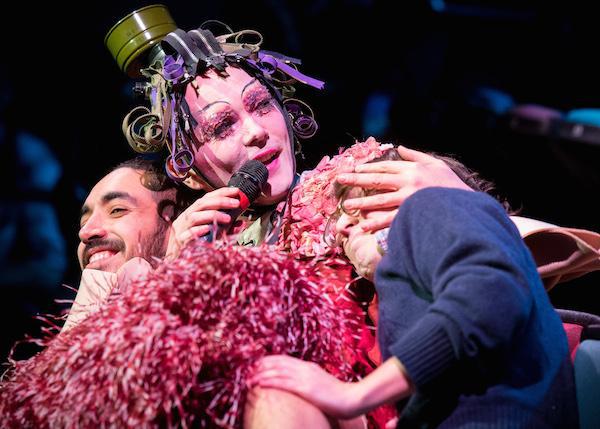
To those who see aggressive audience participation as the cutting edge, even the future, of theatre—who talk about its emergence from video gaming and the digital revolution, etc.—it might be instructive to point out that audience participation is as old as English Pantomime, that it was hip half a century ago when the Living Theatre indulged in it, and that audience manhandling hit the mainstream as far back as Cats.
The three articles above share one thing in common: their author, Jonathan Mandell, a third-generation New York theatre journalist shares his sharp insight through monthly NewCrit contributions. Jonathan has his finger on the pulse of conversations ranging from what constitutes “professional” in our field, to the historic nature of Hamilton not only in content but form, and audience participation and its role in our current theatrical landscape.
***
In the following excerpt, Roxanne Schroeder-Arce looks at a trend toward TYA plays that feature Latina protagonists through two productions: Cenicienta by Rupert Reyes and Caroline Reck, and LUCHADORA! by Alvaro Saar Rios.
Young Latina Protagonists: New TYA Plays put Mexican American Girls Center Stage by Roxanne Schroeder-Arce
June 11, 2015
Cenicienta’s language weaves Spanish and English and directly addresses the politics of language… LUCHADORA! also offers a bilingual world to the audience, in fact a trilingual one—in addition to English and Spanish, the play features some German.
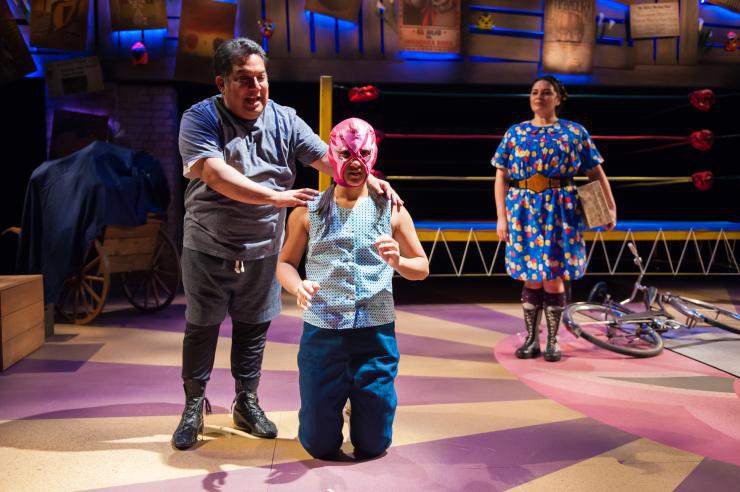
Developing and producing new plays that reach historically underrepresented audiences in the United States is to be applauded. In both of these new works, the stories are inspiring and relevant to young people, specifically young Latinas. While the artists hope that the stories they tell are universal, these specific stories are critical for Latinas who are rarely afforded opportunities to see characters who look and sound like them on stage. Cenicienta and LUCHADORA! encourage young Latinas to reach beyond the simple, stereotypical, limited narratives that have historically bombarded them, and still do today. These stories, in contrast, have the potential to inspire young Latinas to recognize themselves as complex, individual, agents of power in their own lives.
***
Editor’s Picks: Here are a handful of pieces that have stuck with me from 2015.
Complex Movements’ Beware of the Dandelions by Jeff Chang
November 19, 2015
And so, one way to describe Beware of the Dandelions is that it is a performance piece that becomes an engine for much more, including activities that build networks of solidarity within the community beyond the art space. It is a narrative, concert, visual installation, architectural piece, and convening space to distribute revolutionary ideas and activate creative ecosystems and economies of change.
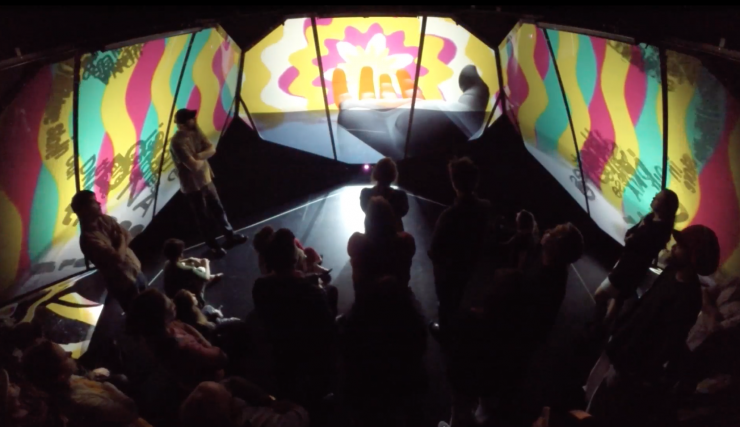
The performance is centered in a 400-square foot sound and visual structure called the Pod…. The Pod becomes the site for what is partly a traditional show and partly a ritual rooted in the idea that, as Walidah Imarisha has put it in Octavia’s Brood: Science Fiction Stories from Social Justice Movements, “Whenever we try to envision a world without war, without violence, without prisons, without capitalism, we are engaging in speculative fiction. All organizing is science fiction.”
But the story is also laden with hopeful allusions to past movements—the Black freedom struggle and labor struggles in the South, especially—and their debates over the viability of nonviolence, the place of beauty and love, and the tension between tradition and modernity.
***
The Sustainable Temporary: An Interview with Andy Field of Forest Fringe by Patrick Gaughan
September 10, 2015

Patrick: On the other hand, your whole enterprise seems based on a completely irrational proposition: show great work for free.
Andy: There’s something positively subversive about that idea, right? A few years ago, we had this artist Lucy Ellington perform one minute manifestos. While the audience was waiting to queue to go into the main space, she picked five people to perform a one-minute manifesto about something they believed in. She timed it, and would blow a horn at you at the end. Such a pointless but beautiful thing. I wrote one called The Gift Manifesto, “a guide to radical giving,” which applies to Forest Fringe. It’s not about balance and exchange. It’s about unsustainable, improbable generosity.
Patrick: Giving without expecting return subverts the whole capitalist showbiz structure. If an audience member pays forty pounds for a show, they demand five stars. They want to be moved and changed. A festival like this can help to alter those preconceptions, our ideas about entertainment exchange value. Is that idealistic?
Andy: Yes, but I think as we get older, there’s more savvy pragmatism that tempers that naivety and optimism. Most people who come to Edinburgh to put shows on don’t expect to make money. If they’re lucky, they break even. So there must be other value implicit in being in Edinburgh. All we’re attempting to do, and here’s the management speak version, here comes the Powerpoint—
Patrick: (Laughs) Yes, talk business to me!
Andy: All we’re attempting to do is minimize the costs in and out in order to ignore the financial element, in order to completely focus on building relationships and having a nice time. Too often, companies get distracted by the need to make enough money to not go home completely broke, but if you’re flyering people on the Royal Mile six hours a day, you’re not seeing other artists’ shows or talking to interesting people.
***
The Brain in the Crown: David Adjmi’s Marie Antoinette and Smart Entertainment by Rob Onorato
May 17, 2015
The integrated and well-executed design is further enhanced by the crackling energy of the two elements that more typically form the bedrock of Steppenwolf’s brand of theatre: a titan of a script performed by actors lousy with talent. There are fireworks going off every minute of the show—I don’t think a Steppenwolf production has ever been so entertaining. And not entertaining in an empty sense, or dazzling in an obfuscatory smoke-and-mirrors kind of way. Marie Antoinette represents the marriage—the political alliance, once might say—of whizbang text to whizbang performances to, well, whizbanging. And it’s smart entertainment, too.
Last year I heard Anne Bogart speak at Boston College, and early in an evening full of full-stop theatrical wisdom, she told us what theatre should do:
- Answer the question—How does the universe work?
- Answer the question—How to live?
- Entertain the drunk.
Whenever I buy a ticket to anything, I’m hoping the confection in store will be a piece of smart entertainment. I don’t mean to denigrate entertainment for its own sake. I’m devoted to plenty of forms and institutions, like bar bands and classic Broadway musicals, which are often nothing more sophisticated than four chords and a wink, yet remain, for me, completely pleasurable. If the creators are talented, they’re also often great art. It’s a special joy, though, to encounter a piece of theatre (or film, or TV, or music) which directs itself toward an audience’s essential pleasure centers (heart, sacrum, genitals) yet also cuts a path to another chakra, doubling the tickle: the brain. Smart entertainment is a delight to watch, and what I believe we should all (at least on occasion) aspire to as makers of theatrical art. While it’s easy to bore people, it takes artists at the top of their game to truly delight them—especially the smart ones, and in the theatre, that’s everybody. Marie Antoinette unites two worlds often sneered at for different reasons: it amplifies mere grins and chuckles into feisty teeth and smiles; and it yanks intellectualism for show back down to earth.
***
Being Real: A. Rey Pamatmat and the New American Identity by Spencer Shannon
June 23, 2015
I’ve never had to qualify my American-ness on account of my being white. As a mixed-race individual, my Asian background added a dimension of duality to my experience that simply existed, unremarked upon, unless in specific contexts. But for visibly brown people, it just doesn’t work that way.
In the theatre world, at least, real American lives onstage remain solidly signified with whiteness.

In a review of after all the terrible things I do, one writer states,
Daniel speaks with the polished craft and complete sentences of a writer—and based on the recitations built into the script, the Huntington could conceivably host an evening devoted to Booth performing the work of O’Hara. But Linda [a Filipina] sounds like the creation of a playwright who’s not yet mastered the task of capturing the cadences of everyday speech.
Another says of Edith:
Like Pamatmat himself, Kenny and Edith (who’s mostly called Ed or Eddie, as if she were a boy) are Filipino-American. They make the occasional reference to their favorite Filipino dishes, but I wish more of their culture were on display, and it seems odd that they have no racial problems at school.
These reviewers, perhaps unconsciously, are speaking to the larger problem at hand: a brown body onstage is unable to be anything more than just that. He, she, or they will always be reduced to that common denominator, the color of their skin dictating the way their narrative is meant to go. Perhaps Linda sounds strange because English is not her first language. Perhaps there are not constant references to Kenny and Edith’s heritage because it is not relevant to their story of navigating first love and parental abuse. Perhaps Edith is referred to as “Ed” simply because that is her name.
***
If you want to see all that NewCrit had to offer in 2015, click here.


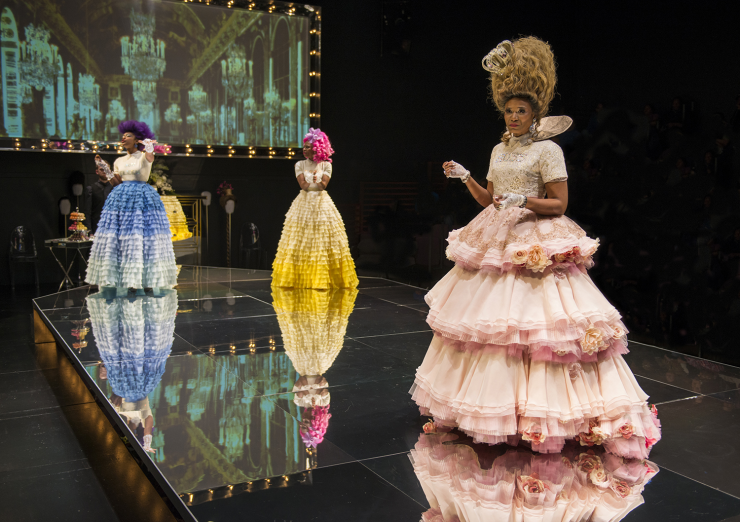



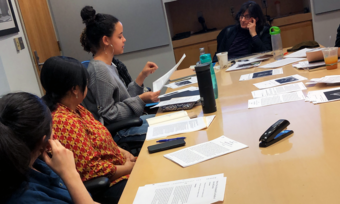


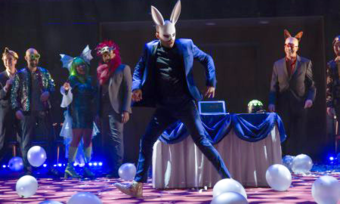

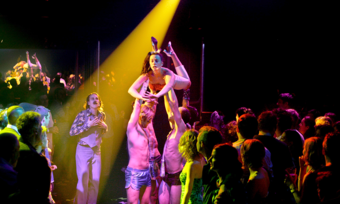

Comments
The article is just the start of the conversation—we want to know what you think about this subject, too! HowlRound is a space for knowledge-sharing, and we welcome spirited, thoughtful, and on-topic dialogue. Find our full comments policy here